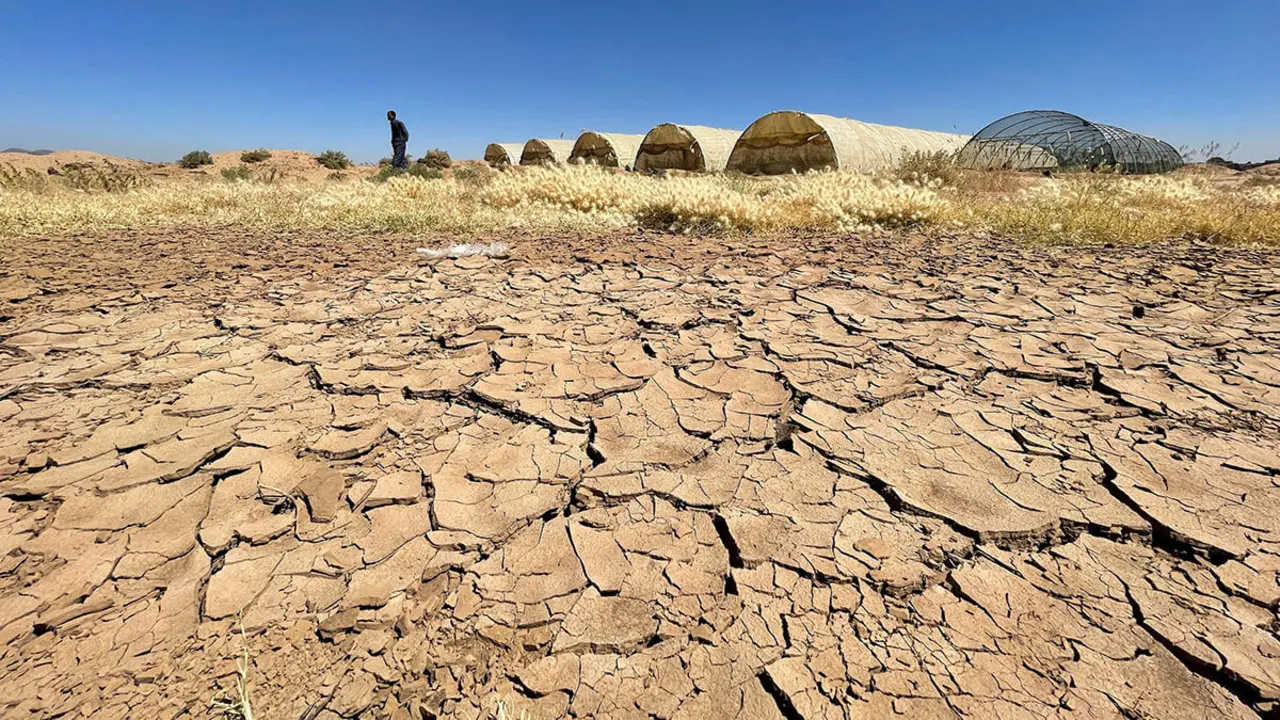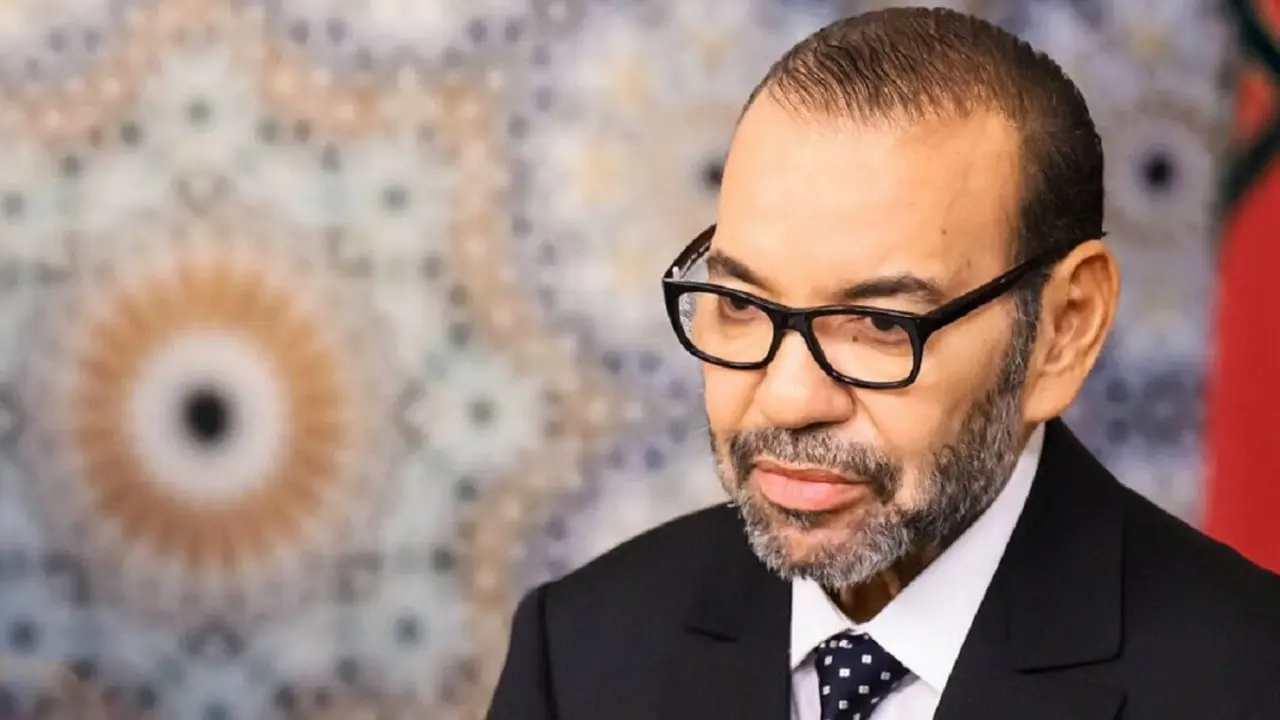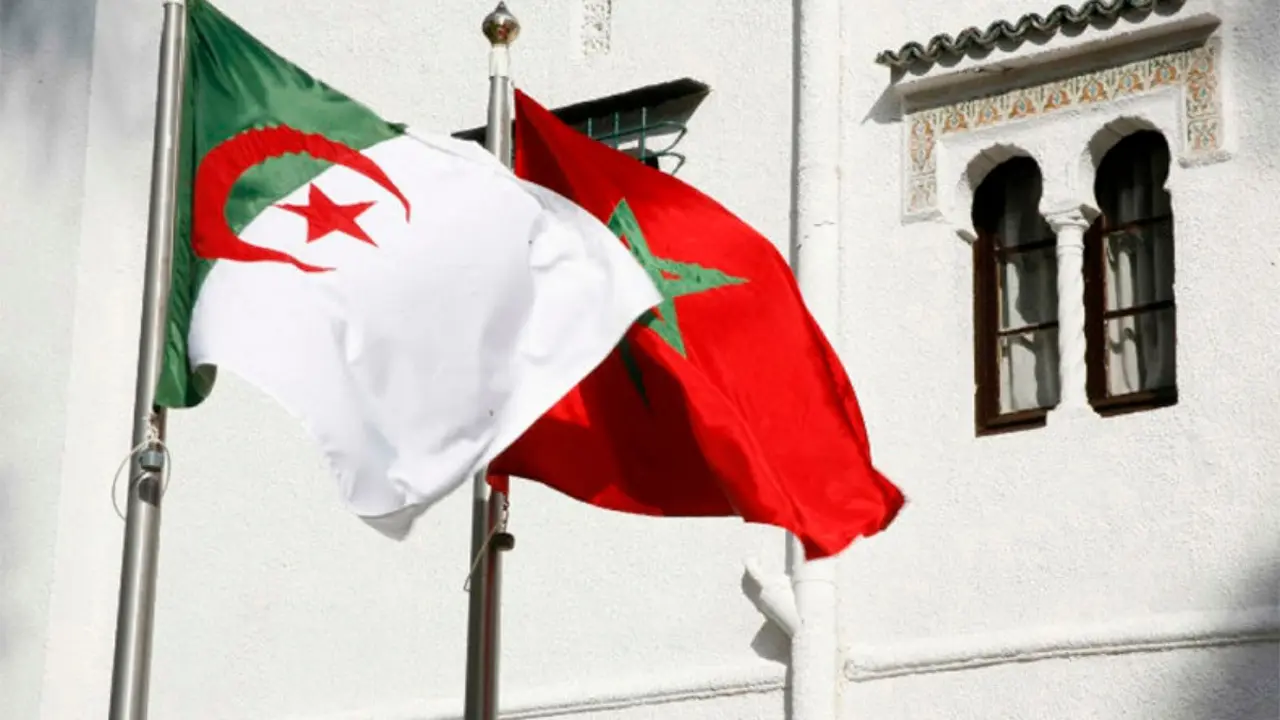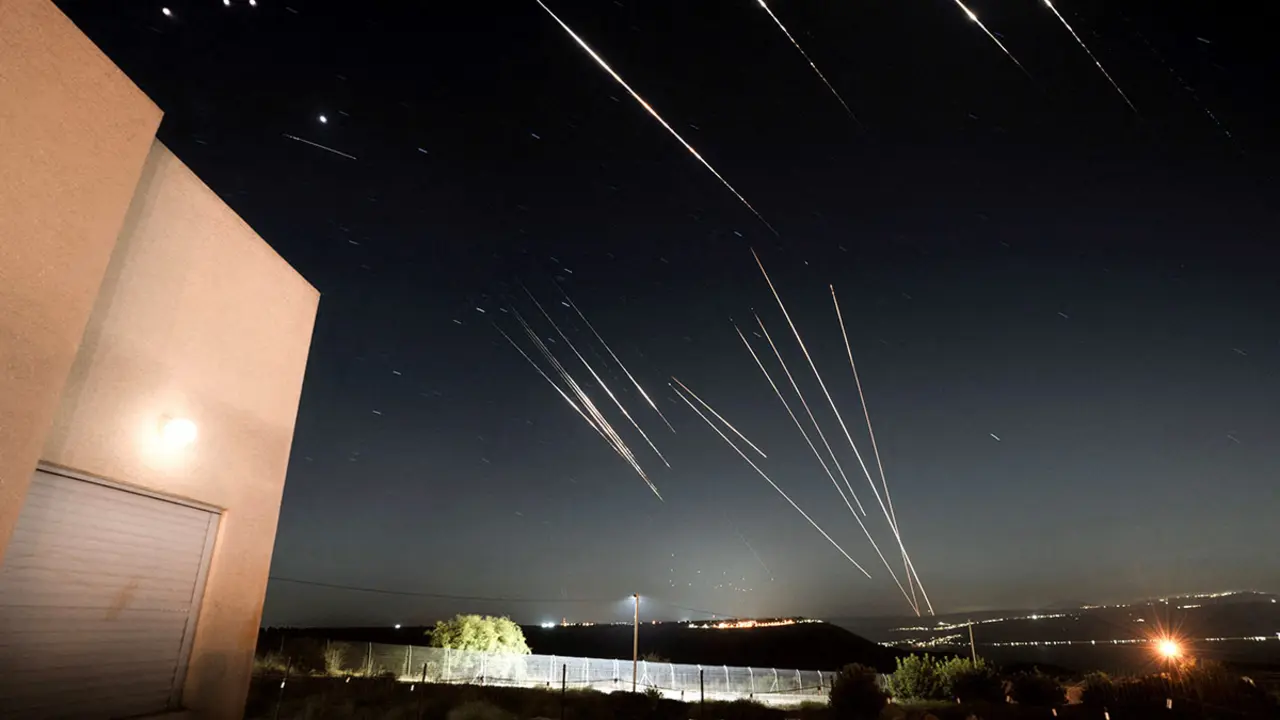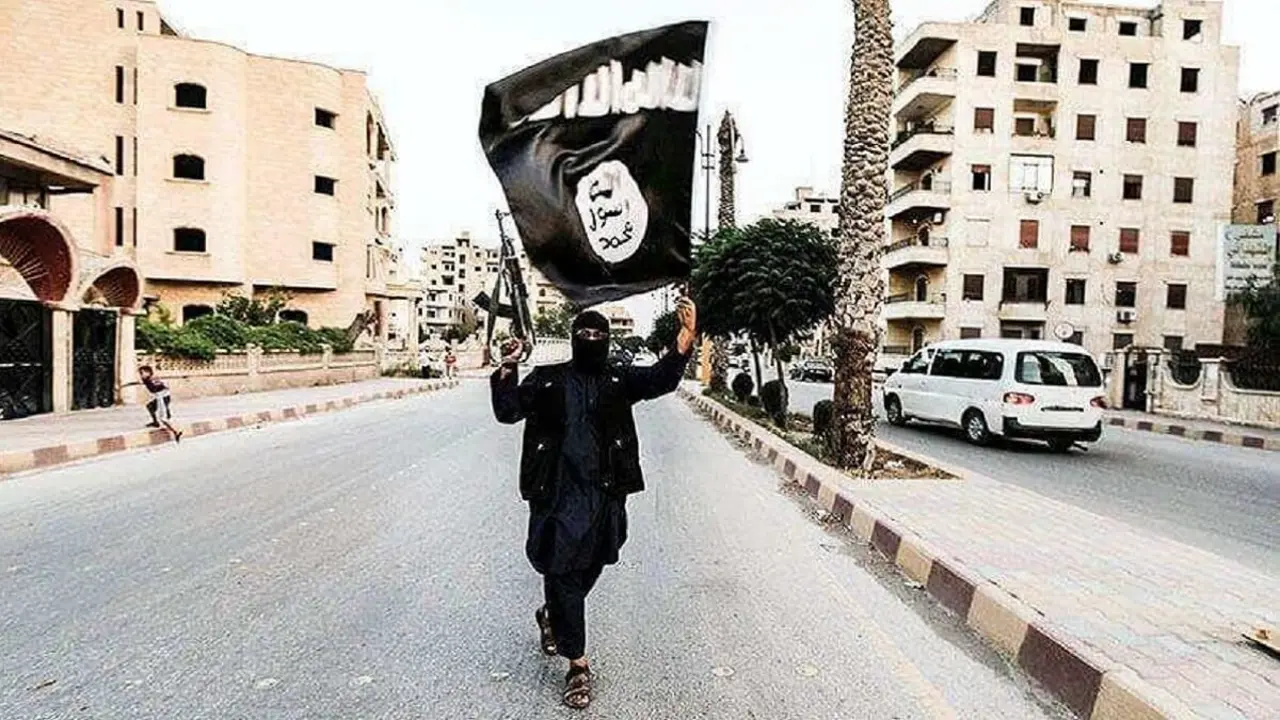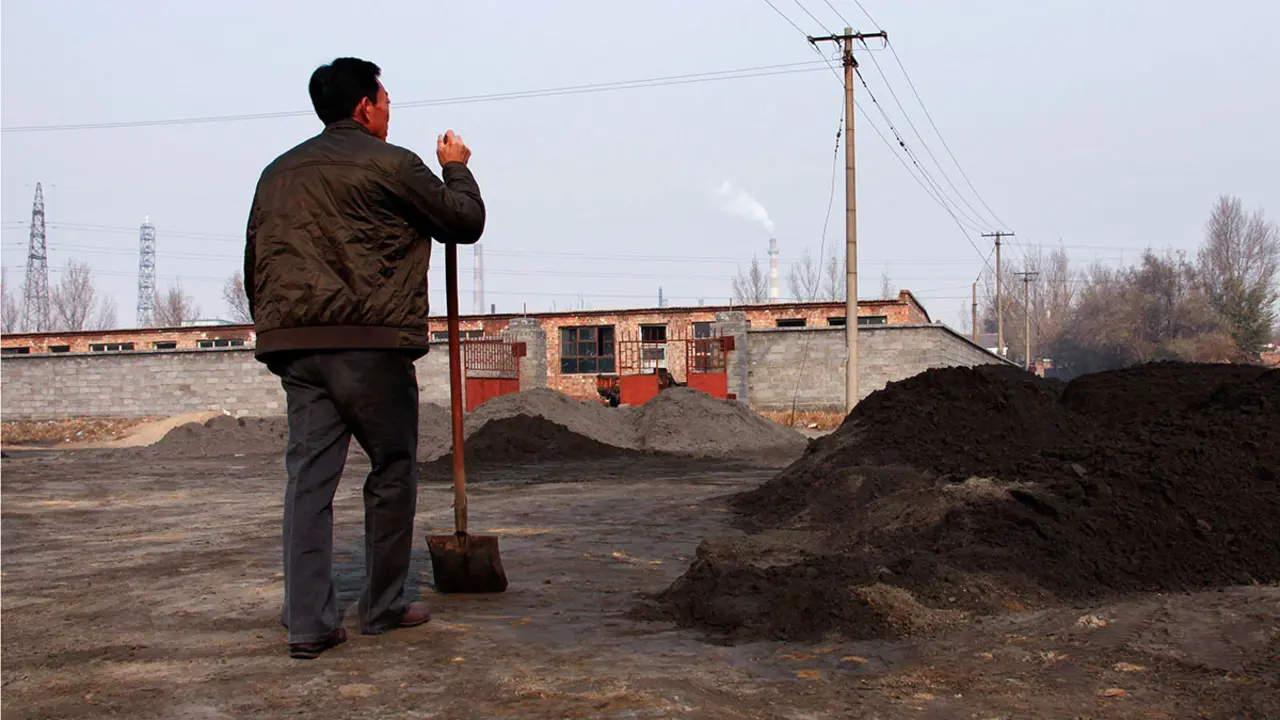Iranian women's struggle inspires the world

Iranian women lead protests with significant support from men
Although the protests in Iran began at the end of the year, they have become one of the main events of 2022. The development of these protests will also be one of the events to follow in the coming year. More than 40 years after the triumph of the Islamist Revolution in the country, Iranian citizens are putting the Ayatollahs' regime in check.
Sonia Sharifi, 16, receives a heroes welcome in Abdanan, Ilam province, after being released from jail. #MahsaAmini#مهسا_امینی pic.twitter.com/aXlkEsvev1
— IranHumanRights.org (@ICHRI) December 15, 2022
It all started with the brutal murder of a 22-year-old Kurdish woman. Mahsa - or Jina - Amini had travelled to Tehran with her brother when the dreaded Morality Police stopped her for wearing the Islamic headscarf incorrectly. After several hours in custody, the young woman was taken by ambulance to a hospital in the capital with serious injuries. She did not make it out alive.
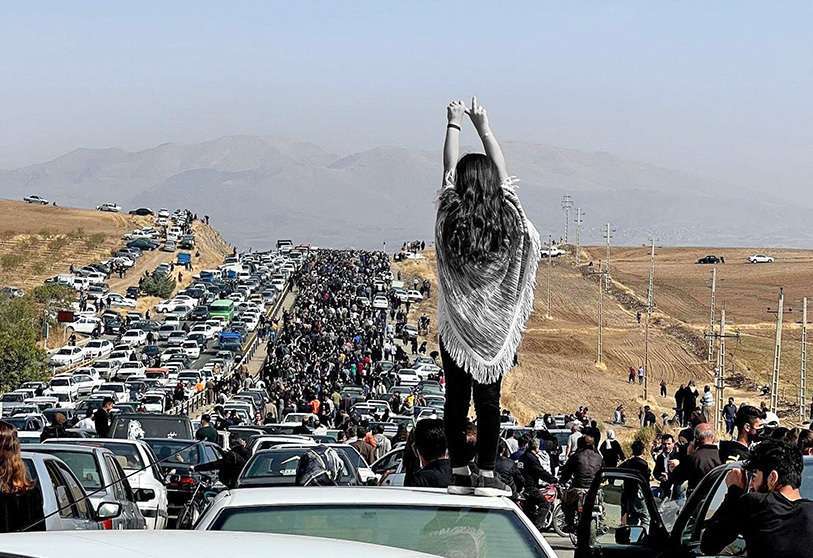
It all started with Mahsa Amini, although there were other aspects behind it that made it easier for the fuse to be lit in Iran, such as strong oppression and censorship, economic crisis and corruption. Similarly, in regions such as Kurdistan - Amini's place of origin - or Sistan and Baluchistan, there was also strong discontent with the government after periods of discrimination and repression. "This time the people want to overthrow the entire regime and have targeted the regime's top person, Ali Khamenei," explains Middle East analyst Mehdi Dehnavi.
Amir Hossein (15)is already 2 months in prison because he protested against the regime
— Darya Safai MP (@SafaiDarya) December 14, 2022
Khamenei's troops shot lead bullets at him. His mother says there’s a bullet in his neck but he hasn’t received medical attention so far.
This child-killing and child-abusing regime must end. pic.twitter.com/bfvZE2YSew
During the first weeks of protests it was common to see women burning hijabs or taking them off in public, as this was the main cause of Amini's murder and that of many other women. However, over time, Iranians - both at home and abroad - have emphasised that the demonstrations are no longer just about the hijab or the Morality Police. Iranians want regime change.

For Ryma Sheermohammadi, Spanish-Iranian activist and translator, this change is inevitable. Sheermohammadi stresses that this change will undoubtedly bring stability and peace to the Middle East. In this regard, she recalls Iranian interference in Syria and Lebanon, as well as in the war in Yemen.
"People want regime change. They don't want reforms, this goes beyond that," says Ali Nowroozi, an Iranian resident in the UK. Nowroozi is also confident of such change. "It has happened before and it will happen again," he says.
FIFPRO is shocked and sickened by reports that professional footballer Amir Nasr-Azadani faces execution in Iran after campaigning for women’s rights and basic freedom in his country.
— FIFPRO (@FIFPRO) December 12, 2022
We stand in solidarity with Amir and call for the immediate removal of his punishment. pic.twitter.com/vPuylCS2ph
The wave of protests that began last September is turning into a real revolution and, although its consequences are still unknown, it is marking a before and after in Iran. For the time being, these protests can be described as "historic" since, for the first time, they have been led by women. "The revolution started with women, this is very powerful," adds Nowroozi.

The role women are playing in the protests is key. Their slogan "Jin, jiyan, azadî" (Kurdish for "woman, life, freedom") has reached all corners of the world, while their courage, bravery and strength have inspired women in equally oppressive countries such as Afghanistan.
Many of these women have died fighting for their freedom, while others have been detained by security forces and suffer constant abuse such as rape and torture. A recent report by The Guardian revealed that many of the women arrested had been shot in the face and genitals.

Around the world, the role of women and their importance in bringing about social and political change has been recognised. Even the famous TIME magazine named Iranian women the heroines of the year 2022. TIME has highlighted a few of them, such as Gohar Eshghi, Narges Mohammadi, Sepideh Gholian, Niloufar Bayani, Elnaz Rikabi, Zahra Amir-Ebrahimi, Nazanin Zaghari-Ratcliffe or Roya Piraie.

Gohar Eshghi has become a symbol of resistance and strength in Iran. Eleven years after the authorities tortured and murdered his son Sattar Beheshti, a blogger critical of the regime, Eshghi continues to demand justice and denounce the Iranian government's violence.
At 76, Eshghi is a tireless defender of human rights in Iran. In addition to being a member of the "Iranian Mothers Whistleblowers" - a group of women demanding justice for the murders of their children - Eshghi has joined the protests following Amini's death, even taking off her Islamic headscarf in solidarity with the demonstrators.
Gohar Eshghi, mother of IR victim Sattar Beheshti, says she has been threatened, adding Islamic Republic leader Khamenei would be responsible for any harm that befalls her or her family. She’s been outspoken about the regime’s atrocities and the killing of her son. @AmnestyIran pic.twitter.com/todP1wbx7P
— Ali Javanmardi (@Javanmardi75) December 11, 2022
Because of her involvement and influence, Eshghi is often threatened by the authorities. She has claimed that the regime has recently increased pressure on her and her family. "If anything happens to us, Khamenei is responsible," she said in a video.
In addition to threats and pressure, Eshghi has been under attack. As reported by Iran International, last year she was assaulted by two strangers while visiting her son's grave.
Narges Mohammadi is one of many people imprisoned in Iran for speaking out against Tehran. Mohammedi, a journalist and vice-president of the Centre for Human Rights Defenders - an institution headed by Iranian Nobel Peace Prize laureate Shirin Ebadi - has received numerous awards for her work as a journalist and human rights activist. The most recent award she received was the Press Freedom Award 2022, given by Reporters Without Borders.
"Narges Mohammadi is a symbol of courage. Even from prison, she continues to report on the situation of prisoners, especially women. Her life is a constant struggle, in which she has to make many sacrifices to make her voice heard. Mohammadi is known for her numerous articles denouncing the human rights situation in Iran, as well as for her documentary and study on "White Torture", based on interviews with prisoners.
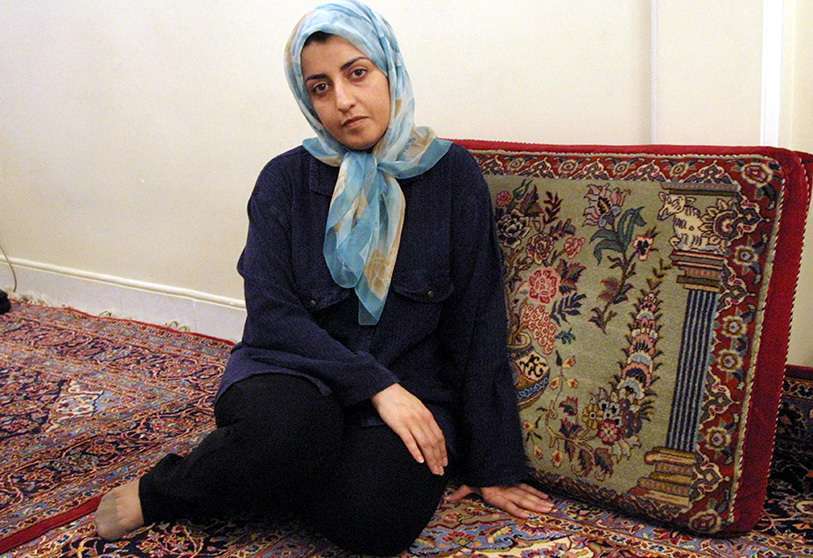
After her stay in Evin - a prison that holds many political prisoners and which was burned down during protests last October - Mohammadi was transferred to the Shahr-e Ray prison, known as Qarchak. "Qarchak prison is notorious for its inhumane treatment of prisoners, torture, abuse and rights violations," warns the Coalition of Women Journalists (CFWIJ). Mohammadi shares a prison with fellow Iranian journalist Alieh Motalebzadeh.
Amnesty International has denounced the torture and ill-treatment of Mohammadi, who was sentenced to 10 years and eight months in prison and 154 lashes in January. The journalist, who suffers from heart problems, has not received medical attention or adequate treatment in prison. The authorities have also denied Mohammadi the possibility of visits from her children.
Another Iranian woman imprisoned for speaking out against the situation in the country is Sepideh Gholian, a 27-year-old writer who has described the torture and abuse women face in the country's prisons. Beatings, humiliation, threats, insults and interrogations lasting more than 24 hours are some of the methods used by the authorities against Gholian, she told Amnesty International.
Iranian female political prisoners who don’t have money are forced to perform sexual acts with guards or enter into temporary marriages with inmates in the men’s ward.
— Masih Alinejad ?️ (@AlinejadMasih) October 14, 2021
My article in @PostOpinions
Sepideh Gholian is exposing abuse in Iranian prisons https://t.co/DB1IcLVN6h
Gholian is currently being held in a prison far from her home, despite her family's pleas. According to Iran Wire, this is a tactic commonly employed by the judiciary to put further pressure on so-called "prisoners of conscience".
The Iranian authorities not only imprison women who openly criticise the regime, but also women who carry out their work outside politics. This is the case of Niloufar Bayani, an environmental researcher specialising in the conservation of flora and fauna. In 2018 Bayani was arrested along with other researchers for using cameras to track endangered species. Although Bayani and her group only wanted to monitor the Asiatic cheetah, the authorities accused them of spying and collecting classified information on strategically sensitive areas.
Head of United Nations environmental body calls on Iran to release Niloufar Bayani.
— Hillel Neuer (@HillelNeuer) August 8, 2021
She's a conservationist who was falsely arrested in January 2018 on charges of espionage & sentenced to ten years in prison.
She was tortured, and held in solitary confinement for eight months. https://t.co/Pf1qLzxgIZ
Bayani, who was sentenced to 10 years in prison, told the BBC that after her arrest, the Revolutionary Guards subjected her to "the most severe mental, emotional and physical torture, as well as sexual threats for at least 1,200 hours".
In October, amid protests sparked by Amini's death, Iranian climber Elnaz Rekabi was at an Asian championship in South Korea. Despite being thousands of kilometres away from her country, she found a way to express her support for the protesters.
Like women in Iran, Rekabi took off her hijab and chose to compete without it in protest at Amini's death. The images went around the world and social media praised the courage of the climber, who was greeted by a crowd when she arrived at Tehran airport. However, with her arrival in the country, fears began to grow about possible reprisals by the regime.
Elnaz Rekabi should not be forcibly returned to Iran. pic.twitter.com/bIzPZ0M6H3
— Amnesty International (@amnesty) October 18, 2022
Days later, during an interview on state television, Rekabi publicly apologised for not wearing the Islamic headscarf, claiming that she had "inadvertently" dropped it. However, sources told the BBC's Persian service that his interview was a forced confession, a recurrent method for the regime.
Despite the apology, the British media reported a few days ago that Rekabi's family home was demolished by the authorities in revenge for Rekabi's heroic act.
The denunciations against the ayatollahs' regime also come from the world of cinema. Zahra Amir-Ebrahimi, an Iranian actress exiled in France, has become one of the most visible faces of the women's struggle in Iran.
Amir-Ebrahimi was the first Iranian to win the Best Actress award at Cannes for her performance in 'Holy Spider', a film based on the true story of a serial killer who killed prostitutes in Iran to, according to her, "eradicate evil".
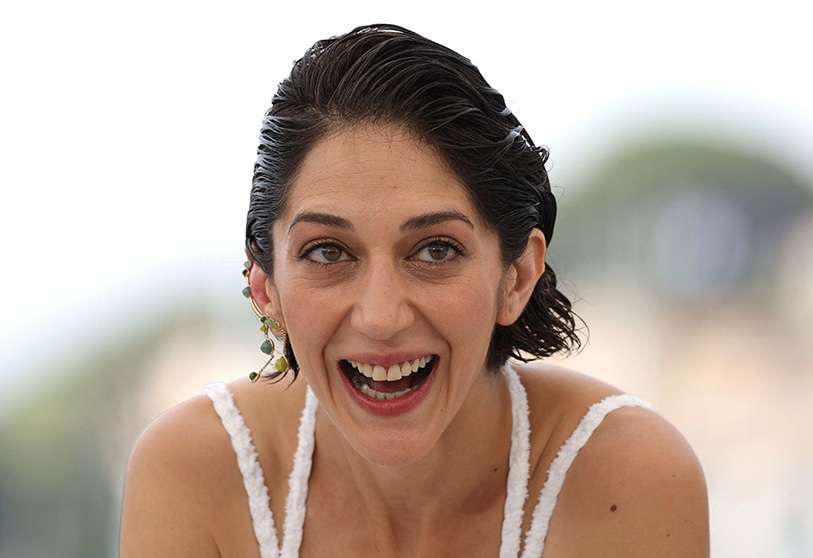
The actress, who plays a journalist investigating femicides, said at the film festival that "Iranian society will change thanks to women", which is why, according to Amir-Ebrahimi, "the government and men are so afraid of women", as reported by Euronews.
Other Iranian actresses have expressed their support for the protests and the demonstrators, such as Golshifteh Farahani, who performed the song 'Baraye' with Coldplay during a concert in Argentina; Nazanin Boniadi, known for her roles in 'Homeland', 'How I Met Your Mother' and 'The Rings of Power'; and Hengameh Ghaziani and Katayoun Riahi, both arrested last November.
At their concert this weekend in Buenos Aires, @coldplay and Iranian actress Golshifteh Farahani performed "Baraye," the song written by 25-year-old Shervin Hajipour that went viral in Iran overnight and became the anthem of the protest movement. pic.twitter.com/DY8Y8HZTci
— Samantha Power (@PowerUSAID) October 30, 2022
In 2016, the life of British-Iranian Nazanin Zaghari-Ratcliffe was turned upside down. Shortly before boarding a plane to the UK, Zaghari-Ratcliffe was detained by Iranian authorities at Tehran airport, where she had travelled to visit her family.
Zaghari-Ratcliffe was sentenced to five years in prison on charges of conspiring to overthrow the Iranian regime. After serving her sentence, she was sentenced to a further year in prison on charges of spreading "propaganda against the system". Zaghari-Ratcliffe, despite being half-British, could not receive consular assistance because Tehran does not recognise dual citizenship.
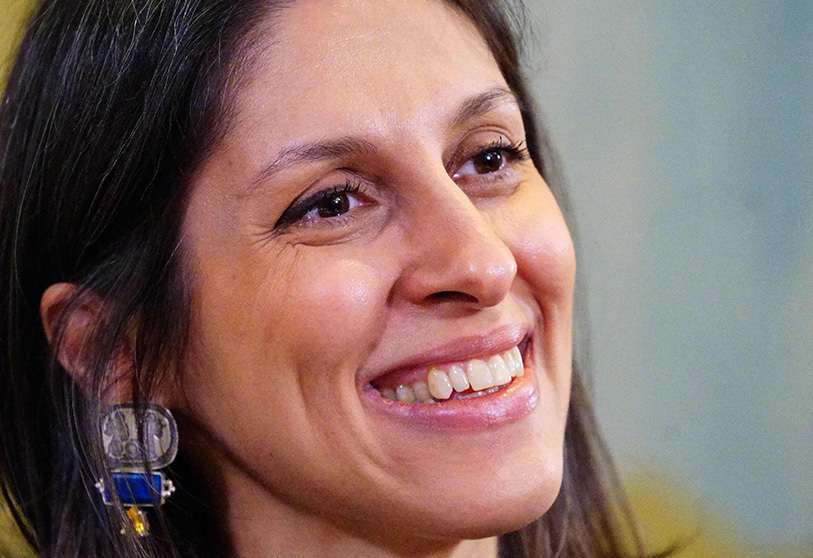
The British government pressured Tehran to release her, claiming that her detention was "arbitrary" and "diplomatic retaliation". The case is reportedly linked to a historic UK debt to Iran valued at some $523 million.
Finally, thanks to diplomatic efforts, Zaghari-Ratcliffe was able to return home along with Anoosheh Ashoori, another British-Iranian citizen accused of espionage.
167. That is the number of bullets found in the lifeless body of Roya Piraie's mother. "My mother was killed at point blank range. She was taking part in a peaceful demonstration," the 25-year-old said during a France Inter programme at the Elysée Palace on the protests in Iran, which was attended by French President Emmanuel Macron.
La lutte de quatre générations de femmes iraniennes pour les droits humains reconnue par le chef de l’Etat français. Merci @EmmanuelMacron pic.twitter.com/6pF9s3FcKW
— Ladan Boroumand (@LadiKhanom) November 12, 2022
Minoo Majidi, her mother, was 62 years old and lived in Kermanshah, Iran's largest Kurdish-speaking city. Piraie recalls that her mother hid her intention to demonstrate from her, worried that she would insist on accompanying her. Her father, meanwhile, tried to convince her not to take to the streets. "If I don't go, who will defend the future of our children," Majidi asked her husband.
Roya Piraie : "Ma mère a été tuée le 20 septembre dans une manifestation contre la mort de Mahsa Amini. Ils ont tué ma mère à bout portant. C'était une manifestation pacifique. Ils l'ont tuée de dos. On a dû l'enterrer entourés par des forces de sécurité" #le7930inter pic.twitter.com/z0hvA4Kx1z
— France Inter (@franceinter) November 14, 2022
Piraie also describes the moment she learned of her mother's death. "I had no tears, no words, just anger burning inside me," she told the French television station.
That anger and despair lasted until the day of the funeral, when Piraie picked up a pair of scissors and decided to cut her hair, another symbol of the protests. The photo of Piraie at her mother's grave with her hair in her hand quickly went viral on social media, becoming one of the most significant images of the revolution.
What a remarkable image. The daughter of Minoo Majidi--a mother of two who was killed by the Iranian regime while protesting for #MahsaAmini--stands at her mother's gravesite. She is defiantly unveiled, and in her left hand she holds the hair she cut from her head. pic.twitter.com/QPqHGk4MDy
— Karim Sadjadpour (@ksadjadpour) September 30, 2022
These women are just a visible sample of the thousands and thousands who risk their lives every day fighting for their freedom or to survive in prison in inhumane conditions, as is the case of Leila Hassanzadeh, Elham Afkari, Mahvash Sabet or Fariba Kamalabadi.
While Hassanzadeh is in prison at risk of losing her sight, Afkari has been on hunger strike for 8 days, also in prison. Afkari was arrested last November together with her husband in front of their young daughter, one of her brothers - Vahid - has been in solitary confinement for 2 years, while the other was killed by the regime.
#ElhamAfkari, mother of a 3 y.o is in prison because the Islamic Republic murdered her brother #NavidAfkari. She’s on hunger strike 8 days. Her physical condition is critical.
— 1500tasvir_en (@1500tasvir_en) December 15, 2022
Her mother is pleading with the monsters not to kill another one of her childrenpic.twitter.com/nPl8irixMt
In addition, after 10 years in prison, Sabet and Kamalabadi - leaders of a council that administers the affairs of the Baha'i community - are again sentenced to another decade in prison.
In addition to those mentioned above, one could also add others who, unfortunately, can no longer protest, such as Hadis Najafi, Nika Shakarami or Sarina Esmailzadeh.
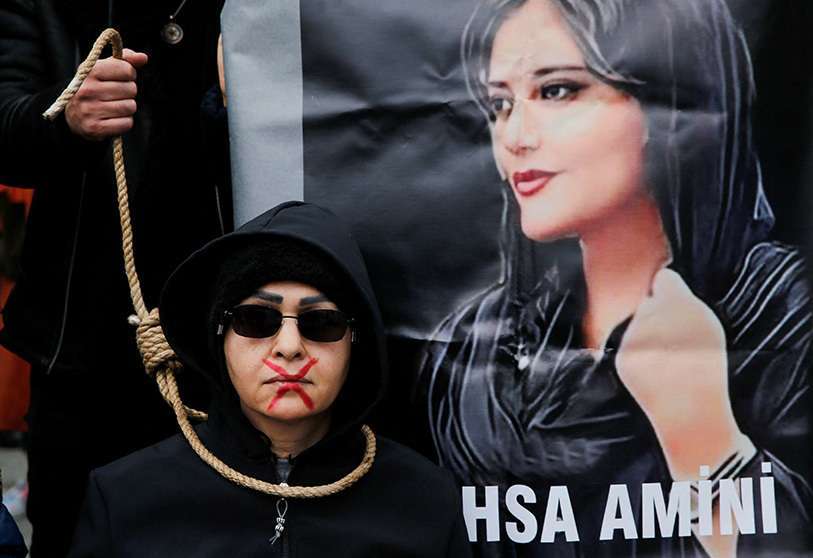
As can be seen, the role of women is becoming extremely relevant. However, it is also necessary to highlight the significant support of Iranian men who, from the beginning, have been involved, fighting side by side with the women, who they protect and support. As Dehnavi explains, "men are also tired of fundamentalism, so it is normal for them to take to the streets alongside women".
#MahanSadrat still hasn't called since 3 nights ago and is in solitary confinement. His case was sent for execution and then was delayed for 48 hours. The 48 hours are up now and Mahan's life is extremely in danger. His sentence may be executed any minute.#StopExecutionInIran pic.twitter.com/SCPNFmptIM
— 1500tasvir_en (@1500tasvir_en) December 13, 2022
Sheermohammadi recalls how a friend of his, now detained, was one of the first to go to Amini's hospital to protest. "They have realised that in this society if they have everything but they don't, things don't work," he adds.
#FarhadTahazadeh & #FarzadTahazadeh two brothers from Oshnavieh have been sentenced to death. @HengawO has reported that their sentence is confirmed. Their lives are in danger.#StopExecutionInIran pic.twitter.com/oza5SGinRC
— 1500tasvir_en (@1500tasvir_en) December 13, 2022
Majid Reza Rahnavard and Mohsen Shekari - both 23 - have been the first Iranians to be executed in public for their involvement in the protests. However, they may not be the only ones. The authorities have sentenced more than 10 people to death and, according to Amnesty International, at least 28 are at risk of execution.
Another 23-year-old protestor, Majidreza Rahnavard, was just executed in Mashhad, Iran. No lawyer, no due process, tortured confession, sham trial. He was hanged for "waging war against God." This cruelty in the name of religion is what has secularized so many young Iranians. pic.twitter.com/p7xz9EBRDn
— Karim Sadjadpour (@ksadjadpour) December 12, 2022
In order to defend them and prevent their murder, numerous European politicians have begun to "sponsor" those sentenced to death. They basically monitor their situation on a daily basis and send letters to Iranian embassies to have their sentences suspended.
We need to #StopExecutionsInIran. That’s why I have assumed the political sponsorship of #HamidGharehHasanlou.
— Sjoerd Wiemer Sjoerdsma (@swsjoerdsma) December 15, 2022
Hamid, an Iranian radiologist, has been sentenced to death because he stood up for the lives of others. pic.twitter.com/VkyZyhWu9J
Despite the critical situation and the executions, the demonstrations have not stopped. "Every execution fuels the protest," Dehnavi says. Nowroozi agrees, noting that "citizens do not forgive or forget all those who have been killed".
This is the beautiful soul Khamenei’s hangmen took from us today: 23 y.o Mohsen Shekari.
— 1500tasvir_en (@1500tasvir_en) December 8, 2022
Many others are threatened with the same fate.#StopExecutionsInIran pic.twitter.com/bLg9rflNpx
As analyst Daniel Bashandeh explains, with these executions the authorities want to "create a psychological impact". The regime not only makes the executions public, but has also gone so far as to release images of the last moments of life of one of those killed. However, "the wall of fear has already been broken down by the protesters", Bashandeh stresses.
The young people whose lives the Islamic Republic is taking with impunity are the same protesters who inspired the world with their courageous uprising for freedom. They need your voice to save their lives NOW!#StopExecutionInIran https://t.co/hlsEha4epR
— 1500tasvir_en (@1500tasvir_en) December 14, 2022
The public executions have not stopped Iranians from speaking out against repression and injustice. Despite the terror spread by the authorities there is no turning back, the Iranian revolution remains stronger than ever and full of hope for change.

